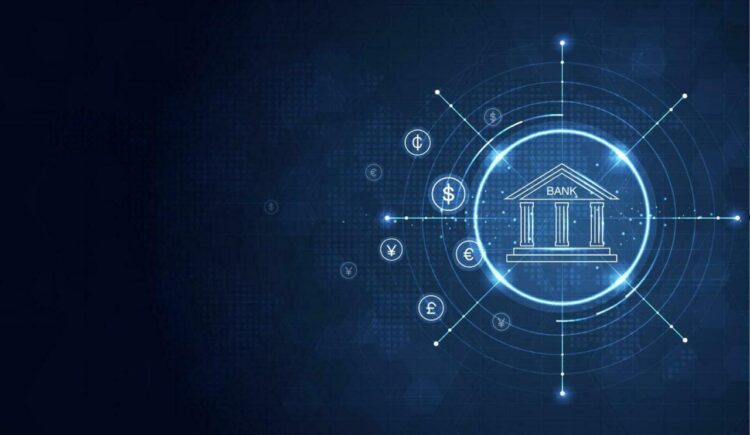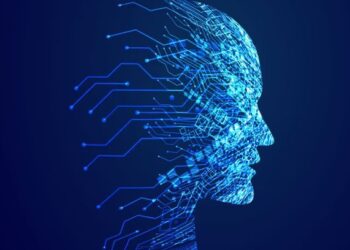The very concept of a bank is undergoing a radical and irreversible transformation. The traditional image of marble halls, long queues, and paper-intensive processes is fading into a nostalgic memory, rapidly being replaced by a slick, intuitive, and always-on digital interface that lives in the palm of our hands. This is not merely an upgrade of old systems; it is the dawn of a new financial era. The new era of digital banking is a complete reimagining of how we earn, manage, move, and invest our money, driven by powerful technological forces and a fundamental shift in customer expectations.
For today’s consumer, convenience is king, and personalization is the key to the kingdom. They expect their banking experience to be as seamless and intuitive as ordering a ride-share or streaming a movie. They demand instant access, proactive insights, and hyper-personalized services that understand their unique financial journey. This profound shift has created an existential challenge for incumbent financial institutions and a golden opportunity for a new breed of agile, tech-forward players. Banks that fail to embrace this digital-first mandate risk becoming relics of a bygone age, while those that innovate will define the future of finance.
This in-depth article explores the multifaceted revolution of digital banking. We will dissect the core technologies and trends that are reshaping the financial landscape, from the intelligent automation of AI to the decentralized promise of blockchain. We will examine the rise of challenger banks, the critical importance of a frictionless user experience, the evolving security challenges, and the data-driven strategies that are creating a new paradigm of personalized finance. Prepare to navigate the currents of this transformation and understand what it takes to thrive in the new era of digital banking.
The Core Drivers of the Digital Banking Revolution
The exodus from physical branches to digital platforms is not a matter of chance; it is a response to powerful, interconnected catalysts that are fundamentally altering the relationship between banks and their customers. Understanding these drivers is crucial to appreciating the scale and permanence of this change.
A. The Ubiquity of the Smartphone: The modern smartphone is the central command center of our lives, and finance is no exception. With powerful processors, biometric security, and constant connectivity, mobile devices have become the primary channel for banking interactions. Customers now expect to perform any financial task, from simple balance checks to complex loan applications, directly from their phones, anytime and anywhere.
B. Shifting Customer Expectations: The digital experiences offered by tech giants like Amazon, Netflix, and Uber have set a new standard for user-friendliness and personalization. Consumers now bring these same high expectations to every digital interaction, including banking. They have little tolerance for clunky interfaces, fragmented services, or one-size-fits-all product offerings. They demand speed, simplicity, and services that are tailored to their specific needs and behaviors.
C. The Rise of FinTech and Neobanks: Financial technology (FinTech) startups and digital-only challenger banks (Neobanks) have entered the market with a significant competitive advantage: they are unburdened by legacy systems. Built from the ground up on modern, agile technology stacks, these disruptors can innovate at a pace that traditional banks struggle to match. They have excelled at identifying and serving niche markets, offering superior user experiences, and challenging the fee-heavy models of traditional banking, forcing the entire industry to evolve.
D. The Power of Data and Artificial Intelligence (AI): The digital ecosystem generates a colossal amount of data. For banks, this data is a goldmine. By leveraging Artificial Intelligence and machine learning algorithms, financial institutions can move from reactive to proactive service. AI can analyze spending patterns to offer personalized budget advice, predict financial needs to suggest relevant products, identify fraudulent activity in real-time, and power intelligent chatbots that provide 24/7 customer support, all at a massive scale.
Pillars of the Modern Digital Banking Experience
A truly digital bank is more than just a website and a mobile app. It’s a cohesive ecosystem of technologies and strategies designed to deliver a superior customer experience. The following pillars represent the essential components of this new financial architecture.
A. The Primacy of User Experience (UX) and User Interface (UI) Design
In the digital realm, the user interface is the new bank branch. A seamless, intuitive, and aesthetically pleasing UX/UI is no longer a “nice-to-have”; it is a fundamental requirement for customer acquisition and retention.
- Frictionless Onboarding: The first impression is critical. The process of opening a new account, which once took days and a physical visit, must now be accomplished in minutes from a smartphone, often using e-KYC (Know Your Customer) technology for identity verification.
- Intuitive Navigation: Customers must be able to find what they need effortlessly. This means clean dashboards that provide a holistic view of their financial health, simple navigation menus, and clear calls-to-action for common tasks like making payments or transferring funds.
- Personalization and Customization: A modern banking app should feel like it was designed for the individual user. This includes customizable dashboards, personalized financial insights, and product recommendations that are relevant to the user’s specific financial situation and goals.
B. Artificial Intelligence (AI) and Machine Learning (ML) in Action
AI and ML are the intelligent engines driving the personalization and efficiency of digital banking. Their applications are vast and transformative, touching nearly every aspect of the banking operation.
- Advanced Fraud Detection: Machine learning algorithms can analyze thousands of data points in real-time to identify patterns indicative of fraudulent transactions, stopping cybercriminals in their tracks with a level of accuracy that far surpasses human capabilities.
- Personalized Financial Management (PFM): AI-powered tools can be integrated into banking apps to act as personal financial advisors. They can automatically categorize spending, create budgets, track savings goals, and provide actionable advice to help customers improve their financial wellness.
- Robotic Process Automation (RPA): Behind the scenes, AI is automating countless repetitive, manual tasks in banking back offices, such as data entry, compliance checks, and report generation. This increases efficiency, reduces errors, and frees up human employees to focus on more complex, value-added activities.
C. Open Banking and the API Economy

Open Banking represents one of the most significant paradigm shifts in the financial industry. Mandated by regulations in many regions (like PSD2 in Europe), it requires banks to share customer data (with the customer’s consent) with third-party financial service providers via secure Application Programming Interfaces (APIs).
- A Universe of Integrated Services: This API economy allows customers to connect their bank accounts with a wide range of third-party apps and services. This could include budgeting apps that aggregate data from multiple accounts, investment platforms that can initiate fund transfers seamlessly, or lending services that can make instant credit decisions based on real-time financial data.
- Fostering Innovation: By opening up their data, banks can partner with innovative FinTechs to rapidly develop and offer new products and services to their customers, moving from being a closed financial institution to an open financial platform.
D. The Evolving Landscape of Cybersecurity
As banking becomes more digital, the threat landscape becomes more complex and dangerous. Protecting customer data and assets is the paramount responsibility of any digital bank, requiring a multi-layered and proactive security posture.
- Multi-Factor Authentication (MFA): Gone are the days of simple password protection. MFA, which requires two or more verification methods (such as a password and a biometric scan or a one-time code sent to a phone), is now the standard for securing access to sensitive financial information.
- Biometric Security: The use of fingerprints, facial recognition, and even voice recognition provides a highly secure and convenient way for users to authenticate their identity and authorize transactions.
- Proactive Threat Intelligence: Modern cybersecurity involves constantly monitoring for new threats, using AI to predict potential attack vectors, and educating customers on how to protect themselves from phishing scams and other forms of social engineering.
The Future Horizon: What’s Next for Digital Banking?

The pace of innovation in finance is only accelerating. The digital banking era is still in its early stages, and several emerging technologies are poised to trigger the next wave of disruption and opportunity.
- Blockchain and Decentralized Finance (DeFi): While still maturing, blockchain technology holds the potential to revolutionize core banking functions. Its decentralized, immutable ledger could enable faster, cheaper, and more transparent cross-border payments, streamline trade finance, and create new forms of digital assets.
- Hyper-Personalization at Scale: The future of banking is a “segment of one.” Leveraging even more sophisticated AI models, banks will be able to predict a customer’s life events (like buying a home or starting a family) and proactively offer tailored financial products and advice at precisely the right moment.
- Embedded Finance: The concept of banking is becoming increasingly invisible and integrated into non-financial platforms. This “embedded finance” model will allow consumers to access financial services, such as “buy now, pay later” (BNPL) options or insurance, directly at the point of sale within an e-commerce site or retail app, without ever needing to interact with a traditional bank interface.
In conclusion, the new era of digital banking is defined by a relentless focus on the customer. It’s an ecosystem built on the foundations of seamless technology, intelligent data, and unparalleled convenience. The institutions that will thrive are not necessarily the ones with the longest history, but those with the greatest agility, the deepest understanding of their customers’ digital lives, and the boldest vision for the future. The transformation is profound, the stakes are high, and the journey has only just begun.












